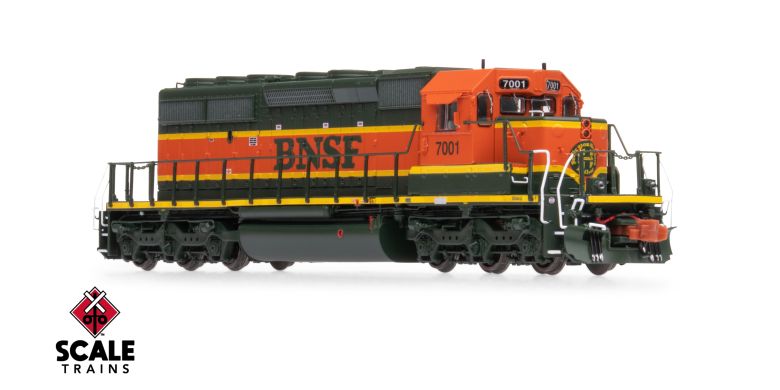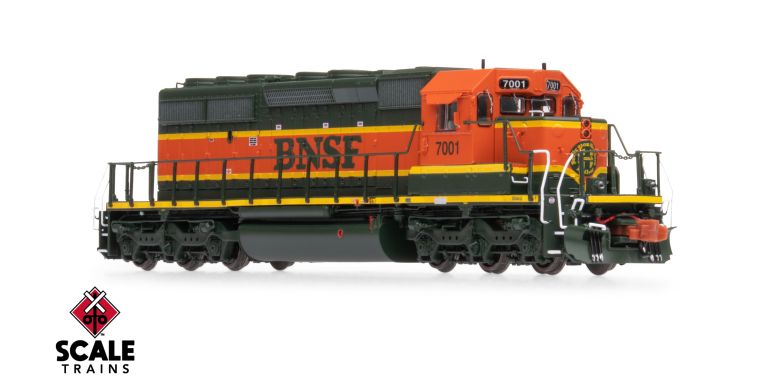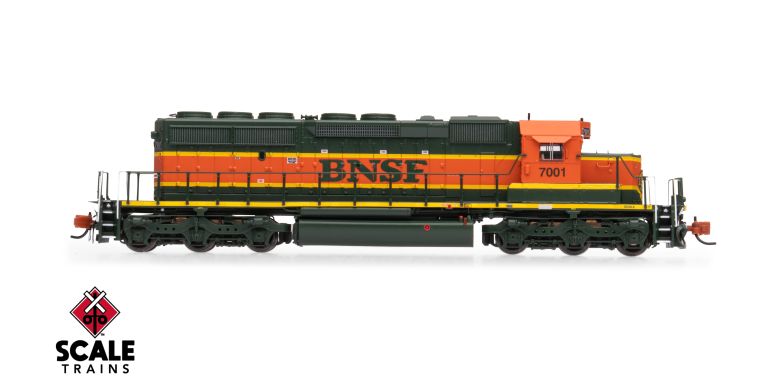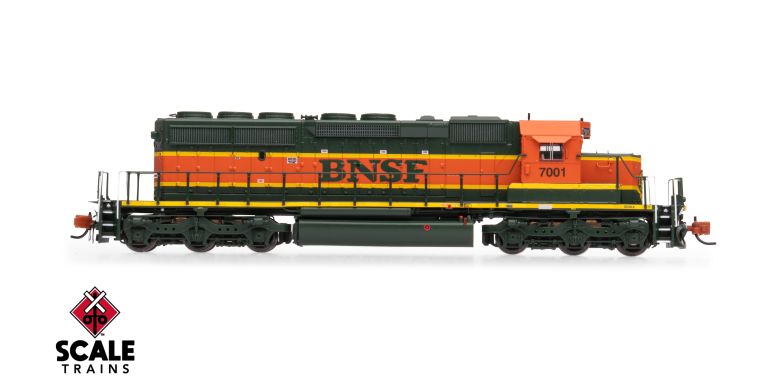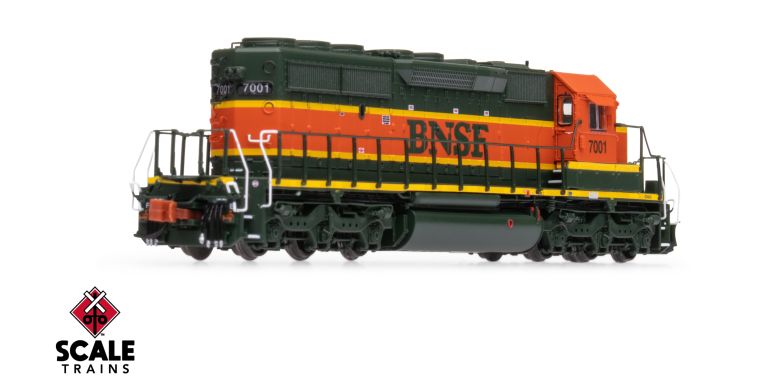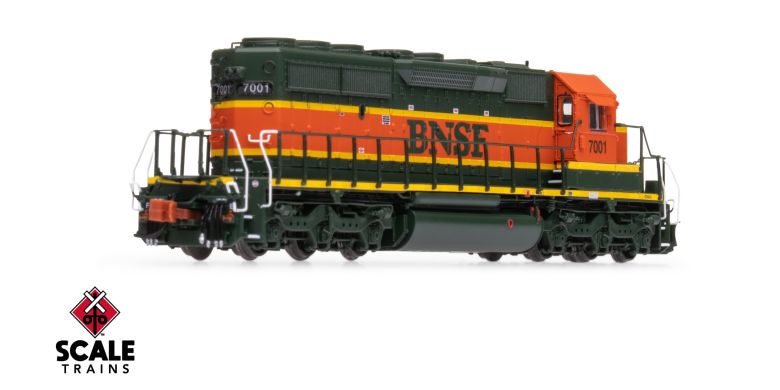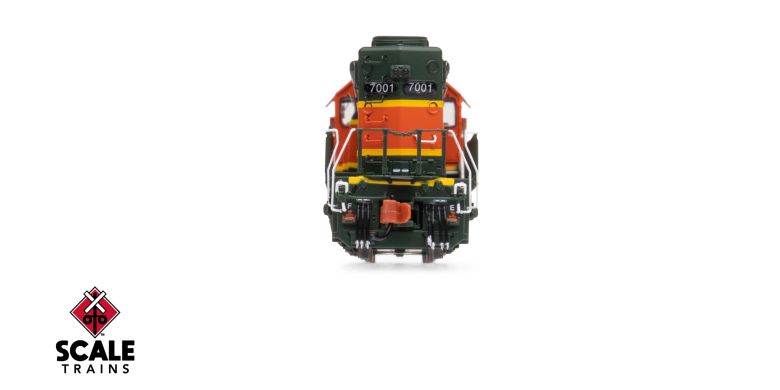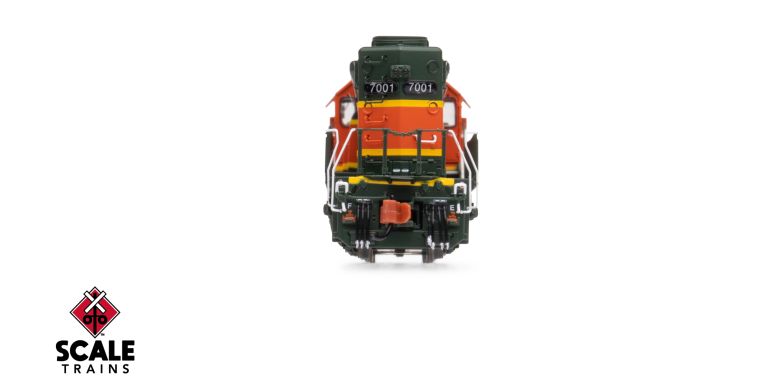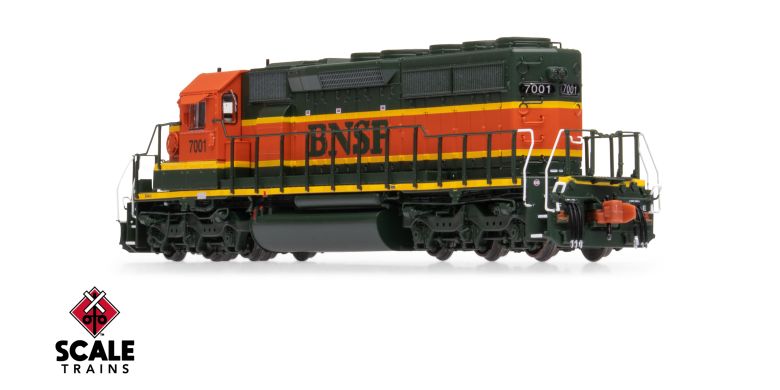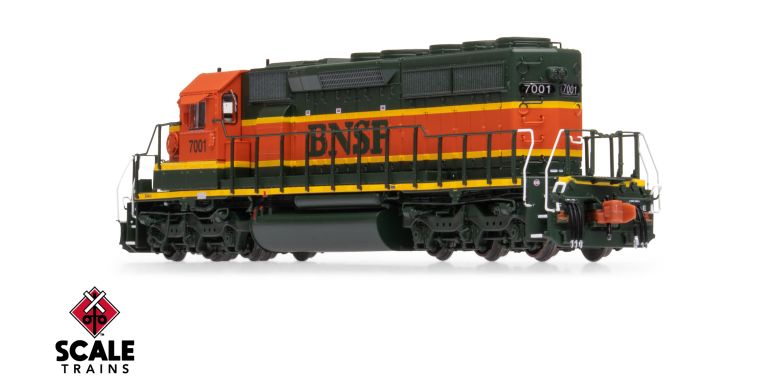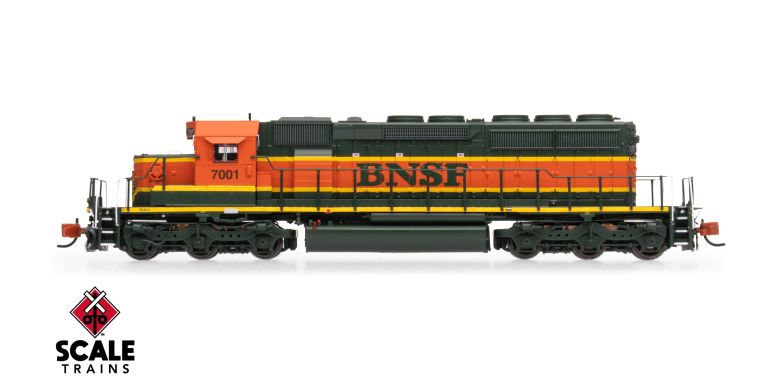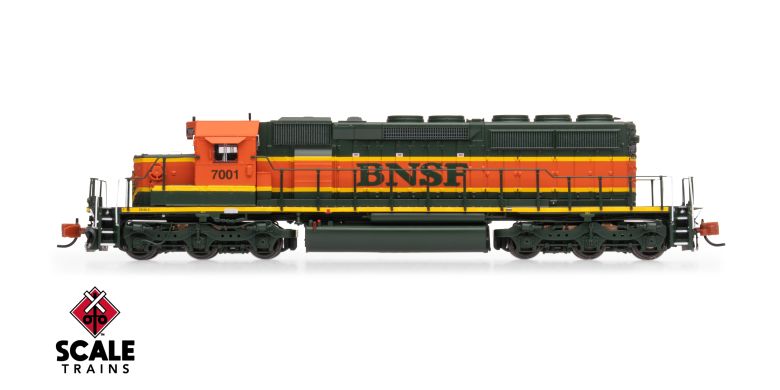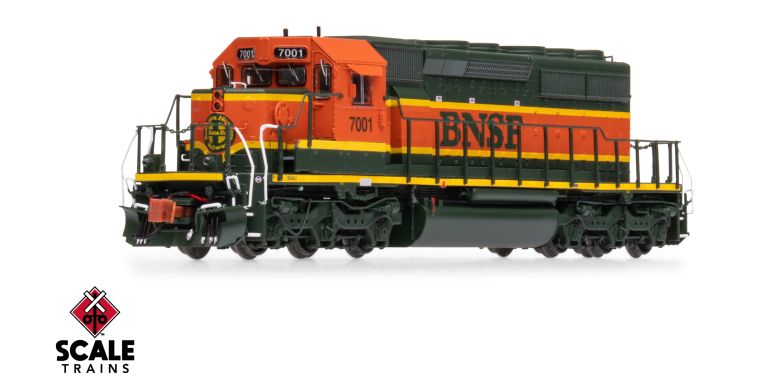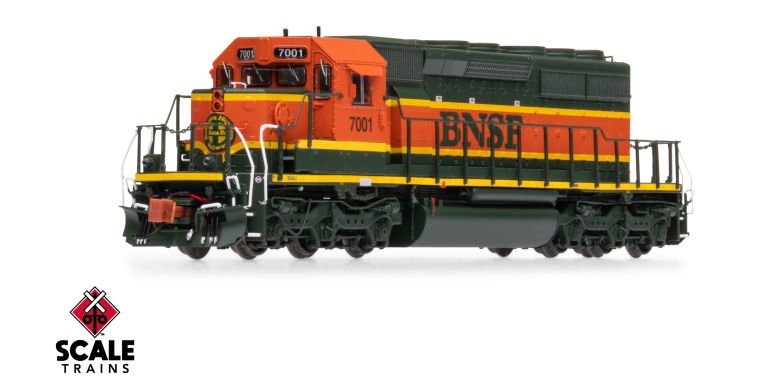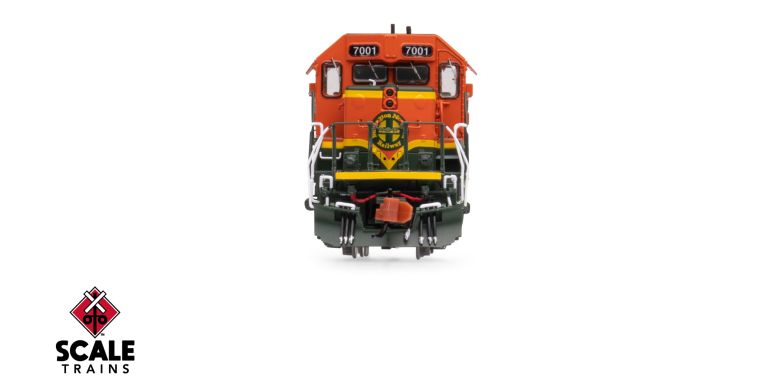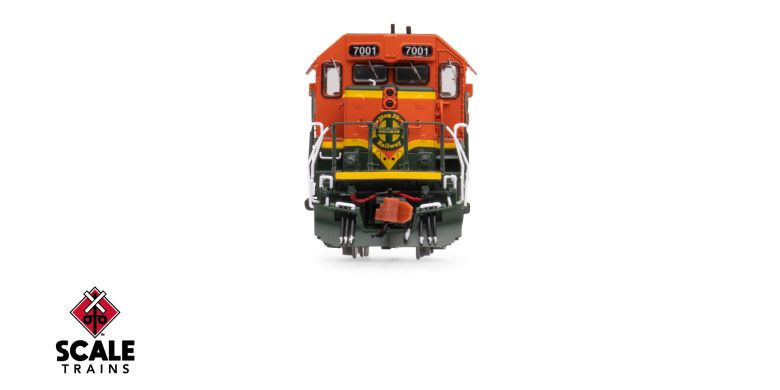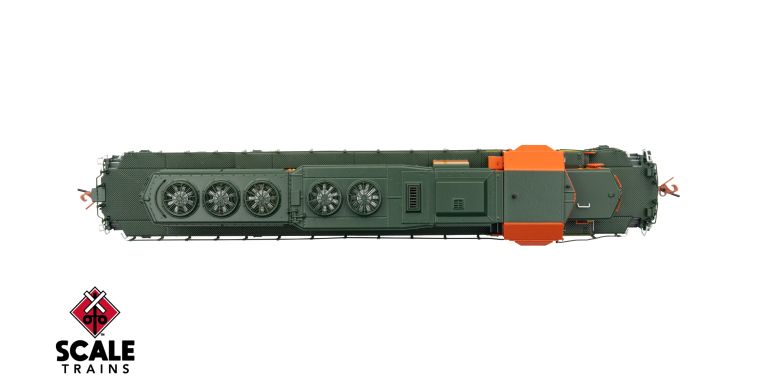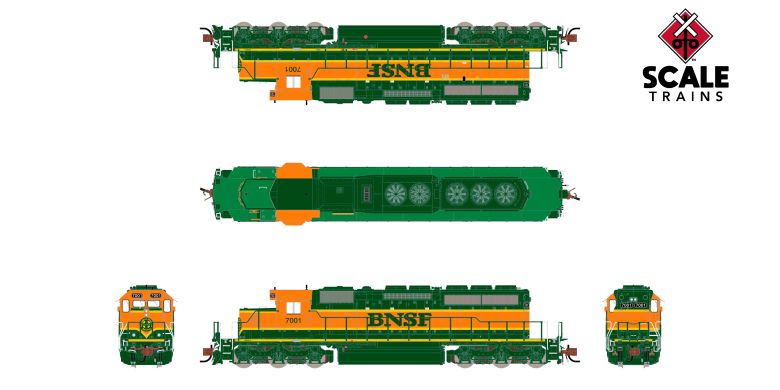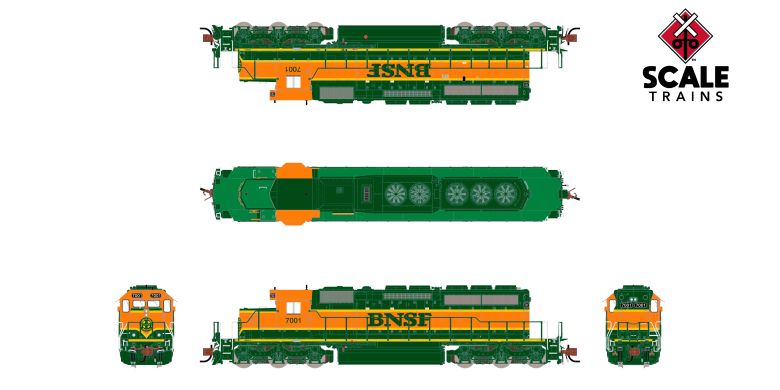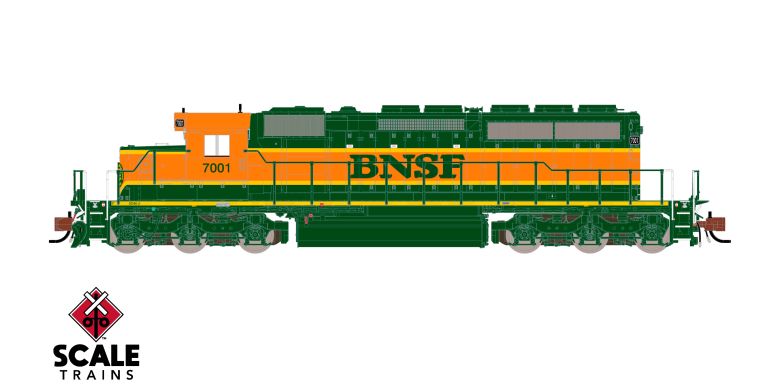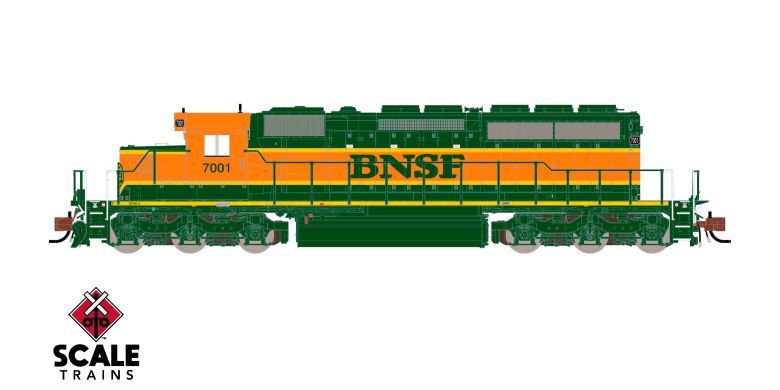Scaletrains Rivet Counter SXT40679 EMD SD40-2, BNSF/Heritage I/Large Circle-Cross Nose Logo #7035 DCC & Sound N Scale
Scaletrains Rivet Counter SXT40679 EMD SD40-2, BNSF/Heritage I/Large Circle-Cross Nose Logo #7035 DCC & Sound N Scale is backordered and will ship as soon as it is back in stock.
Couldn't load pickup availability
Description
Description
Scaletrains Rivet Counter SXT40679 EMD SD40-2, BNSF/Heritage I/Large Circle-Cross Nose Logo #7035 DCC & Sound N Scale. Picture may show a different road number.
The Rivet Counter™ series SD40-2 is the definitive N Scale model of EMD’s best-selling diesel locomotive. Our model combines smooth operating performance with unparalleled railroad, road number, and era specific™ details. Even though the first SD40-2s were first built nearly half a century ago, many continue to operate in revenue service today.
Rivet Counter SD40-2s include detailed cab interiors; sectioned treadplate on walkways; numerous factory-applied wireform grab irons; windshield wipers; trainline hoses with silver gladhands; and more. They also come equipped with directional LED-lit headlights and number boards, plus front and rear LED-lighted ditch lights (per the prototype).
Road Number Specific ScaleTrains
- New roadname
- Era: Late 1990s to Early 2000s
- Series 7000 to 7053; built 1977-78 (Former BN – same numbers)
- Fully-assembled
- Multiple road numbers
- Operating LED-illuminated front deck-mounted ditch lights*
- BN-style latched battery box doors with narrow louvers and lift-off hinges
- Blanked front and rear class lights
- Printed and LED-illuminated number boards*
- Front EMD-style low pilot plow with grab irons and without multiple unit (MU) hose doors
- 3-hose multiple unit (MU) hose clusters with silver gladhands
- Body mounted knuckle couplers; Micro-Trains® compatible
- Coupler box accepts Micro-Trains 1015/1016 couplers without modification
- Straight uncoupling levers with loop handles front and rear and four inner and two outer mounting brackets
- Notched pilot faces with high angled lifting slots
- Pilot face mounted multiple unit (MU) receptacle
- Dummy multiple unit (MU) receptacle mounted to pilot face
- "Tall" stepwells
- Wide “blunt” front pilot anticlimber
- Handrail set with anticlimber front; inward facing rear end rail mounting brackets and chain
- Late “fixed” rear drop step
- Scale sectioned treadplate detail on walkways
- Round walkway lights (non-operating)
- 88" low short hood with wheel handbrake
- Late cab sub-base doors with lift-off hinges
- Front retrofitted LED-illuminated headlight cut into nose, blanked number board light
- Dash two cab with bolted side window panels
- Detailed cab interior with floor, rear wall, seats, and standard AAR control stand
- Rear cab side vent on left side
- Small mirrors mounted fore of cab side windows on both sides of cab
- Standard EMD sunshades and long sunshade tracks
- Lost wax brass cast Nathan AirChime K3LA horn relocated to the long hood roof
- Tall and short (comm. and EOT) “Firecracker” antennas on cab roof
- Early electrical cabinet "zig-zag" seam, further from rear of cab
- Late welded ECAFB
- Intermediate inertial air intake grills with top drip rail
- Standard turbo exhaust stack
- Accurately profiled standard-range dynamic brakes with batten strip
- Corrugated radiator intake grilles
- See-through standard 48” radiator fan housings with fan blades visible inside
- Curved radiator fan grab iron
- Underbody frame rail with separate plumbing and traction motor cables
- Detailed HT-C trucks with Hyatt bearing caps, late center axle snubbers, sanding lines and brackets
- Speed recorder mounted to first axle left front
- Reward facing handbrake chain mount for HTC trucks
- Short jacking pads (late)
- Spare knuckle holders on rear pilot face
- Rearward engineer’s side sidesill notch
- Tab-mount EFCO
- Frame-mounted steel bell
- Graham-White (Salem) brand 824-170 and 818-170 primary and secondary centrifugal air filters (accordion-style)
- 4,000-gallon fuel tank with dual fuel fillers, vertical gauge, round gauge in tank (right side only), vertical breather pipe and waste retention tank
- Factory-applied wire grab irons, windshield wipers, trainline hoses with silver gladhands, and more
- Motor with 5-pole skew wound armature
- Dual flywheels
- All-wheel drive
- All-wheel electrical pick-up
- Directional LED headlights
- Printing and lettering legible even under magnification
- Operates on Code 55 and 80 rail
- Packaging safely stores model
- Minimum radius: 9 3/4”
- Recommended radius: 11”
DCC & sound equipped locomotives also feature
- ESU LokSound 5 DCC & Sound decoder with “Full Throttle”
- One (1) cube-type speaker
- EMD 16 Cylinder 645E3 prime mover
- Operates on both DC and DCC layouts
- Lighting features operate when using an ESU decoder with appropriate programming while operating using DCC
In January 1972, Electro-Motive Division (EMD) of General Motors would build the first production models of a locomotive design that would prove to be legendary: the SD40-2. The flagship of the “Dash-2” series of 1972, the SD40-2 would build upon the lessons learned from its predecessor, the SD40. While the sixteen-cylinder 645E3 turbocharged prime mover remained the same as its SD40 cousin, the SD40-2 boasted a modular, solid-state electrical system, which featured removable “cards” in place of troublesome relays in its high-voltage cabinet, greatly simplifying electrical troubleshooting and repairs.
Externally, the biggest change was the use of the new HT-C three-axle truck in place of the Flexi-coil C of the SD40. The new truck promised greater adhesion, and was longer than the Flexi-coil C, necessitating an increase of the length of the SD40-2s frame to an overall length of 68’, 10” over the couplers. This also had the effect of giving the SD40-2 its characteristic long walkway “porches” at each end. Other small external improvements, such as longer battery box compartments, rear overhang on the cab roof, and drip rail over the front cab door, added to the list of external differences between it and the SD40.
Domestic production of the SD40-2 continued until July 1984, making it one of EMDs most popular locomotives of all time. Many remain in service today, both with original owners, as well as secondhand operators. Within the past decade, CSX, Norfolk Southern, and Union Pacific have rebuilt hundreds of SD40-2s to extend their operating lives. This will ensure this venerable locomotive’s presence on U.S. rails for decades.
Specifications
Specifications
-
Scale
-
Product Type-
-
Height
-
Width
-
Depth


